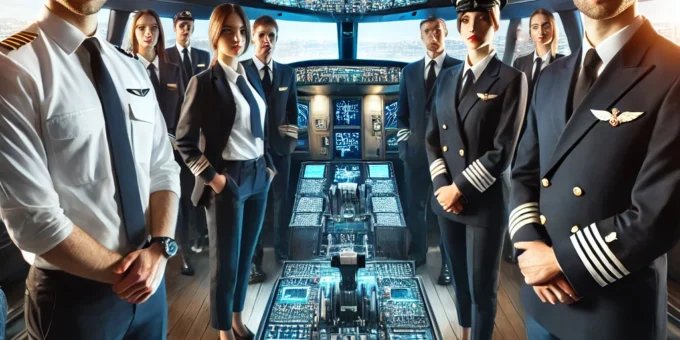
The aviation industry has always been a pioneer in adopting cutting-edge technologies, but pilot technology is truly redefining the way we fly. From reducing pilot workloads to enhancing safety and operational efficiency, advancements in pilot technology are paving the way for a smarter, safer, and more sustainable future in the skies.
The Rise of Pilot Technology
Pilot technology has come a long way since the early days of aviation when pilots relied on rudimentary tools and their instincts to navigate and operate aircraft. Over time, with innovations in electronics, computing, and artificial intelligence, cockpits have transformed into sophisticated hubs of technology. The shift from analog systems to digital avionics marked a significant turning point, introducing unparalleled precision and reliability. Today, we’re entering an era where automation and connectivity are the norms, redefining the role of the pilot.
What is Pilot Technology?
Pilot technology encompasses the tools, systems, and innovations that assist pilots in managing aircraft operations. This includes flight management systems, advanced navigation tools, automated controls, and communication systems that enable seamless coordination between pilots, air traffic controllers, and ground crews. These technologies aim to make flying safer, more efficient, and less taxing for pilots while enhancing the overall passenger experience.
The Role of Automation in Aviation
Automation is one of the cornerstones of modern pilot technology. Autopilot systems and flight management computers handle routine tasks like maintaining altitude, navigating to waypoints, and managing engine performance. This frees pilots to focus on more critical decision-making processes. Artificial intelligence has further revolutionized automation by enabling predictive maintenance, real-time decision support, and adaptive control systems. For instance, AI-driven systems can analyze vast amounts of data to optimize flight routes based on weather patterns and air traffic, reducing delays and fuel consumption.
Enhanced Safety Features
Safety is paramount in aviation, and pilot technology plays a critical role in ensuring it. Modern systems are equipped with predictive analytics, collision avoidance mechanisms, and ground proximity warning systems. These features provide pilots with real-time alerts and actionable insights, minimizing the risk of human error. Additionally, innovations like emergency auto-land technology, which allows aircraft to land autonomously during emergencies, are setting new standards for safety.
Flight Planning and Navigation
Gone are the days of paper maps and manual calculations. Today’s pilots use sophisticated flight planning tools that integrate GPS, satellite imagery, and real-time weather data. These tools provide accurate, up-to-date information, allowing pilots to plot optimal flight paths and adjust their routes dynamically. Navigation systems have also improved significantly, ensuring precise positioning even in challenging conditions.
Communication Systems in Modern Cockpits
Effective communication is essential for safe and efficient flight operations. Modern cockpits are equipped with advanced communication systems that enable clear, uninterrupted dialogue between pilots and air traffic controllers. Technologies like CPDLC (Controller-Pilot Data Link Communications) reduce miscommunication by allowing text-based messaging alongside traditional radio communications. These systems are particularly valuable in congested airspaces and during complex flight operations.
The Integration of Artificial Intelligence
Artificial intelligence is reshaping the aviation industry in profound ways. AI-powered co-pilot systems can assist with tasks like monitoring fuel efficiency, detecting anomalies, and predicting maintenance needs. By leveraging machine learning algorithms, these systems continuously improve their performance, making flights smoother and more reliable. AI is also instrumental in automating routine checks, freeing up pilots for more strategic roles.
You Can Also Read : What You Need to Know About Aviation Insurance Regulations
Wearable Pilot Technology
Wearable technology is bringing a new dimension to pilot operations. Devices like smart glasses with augmented reality (AR) overlays can display critical flight data, navigation cues, and checklists in real-time. Wearable sensors monitor a pilot’s health, ensuring they remain fit and alert during long flights. These innovations are especially useful in training scenarios, providing immersive, hands-on learning experiences.
